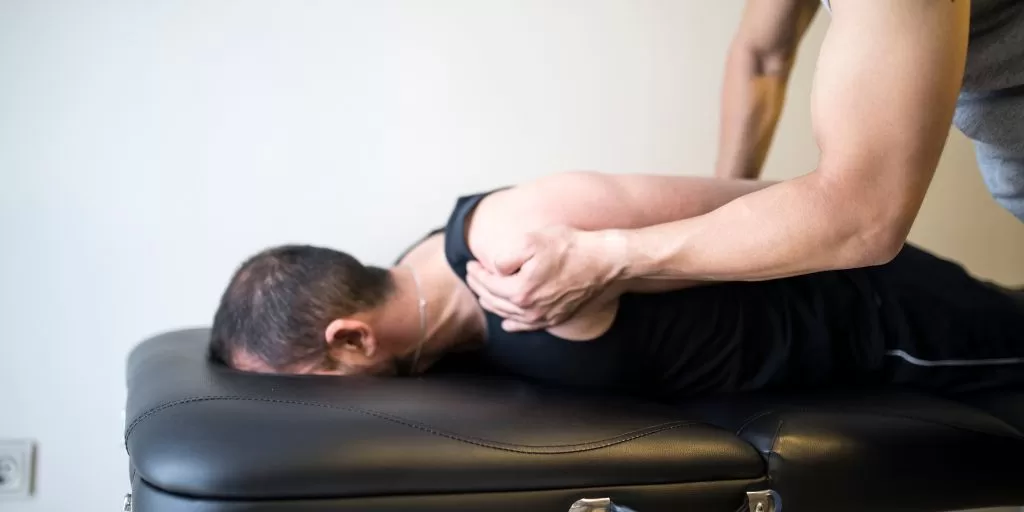Are you an athlete looking to improve your performance and recovery time? Or perhaps you’re an active individual seeking relief from muscle soreness and tension? Sports massage therapy may be the answer you’re looking for. This type of therapeutic massage is specifically designed for athletes and active individuals and is used to help prevent and treat injuries, improve flexibility and range of motion, and enhance performance. In this article, we’ll delve into the benefits of sports massage and how it can help you achieve your fitness goals.
Table of Contents
- 1 What Is Sports Massage Therapy?
- 2 What Is a Sports Massage Therapist?
- 3 What Are The Benefits of Sports Massage?
- 4 Who Is Sports Massage For?
- 5 Tools and Techniques Used in Sports Massage Treatments
- 6 Side Effects of Sports Massage
- 7 Other Forms of Manual Treatment
- 8 How To Become A Sports Massage Therapist?
- 9 Sports Massage FAQ
- 9.1 Is Massage Therapeutic?
- 9.2 Can I Go to the Gym After a Sports Massage Treatment?
- 9.3 Can I Drink Alcohol After a Sports Massage Treatment?
- 9.4 How Long Does a Sports Massage Treatment Last?
- 9.5 Is Sports Massage Treatment Expensive?
- 9.6 What to Wear to a Sports Massage Treatment?
- 9.7 Are There Different Types of Sports Massage Treatments for Men and Women?
- 9.8 Can Sports Massage Treatment Trigger an Emotional Response?
- 9.9 How Often Should I Visit a Sports Massage Therapist?
- 10 Finding the Right Sports Massage Therapist for Yourself
What Is Sports Massage Therapy?
Sports massage therapy is a type of therapeutic massage that is specifically designed for athletes and active individuals. It is used to help prevent and treat injuries, improve flexibility and range of motion, and enhance performance.
Sports massage therapy may involve a variety of massage techniques. The specific techniques used will depend on the needs of the athlete or active individual and the goals of the massage therapy session. Sports massage therapists work mainly with the muscle tissue and connective tissue they perform massages that heal the body and help it recover. When a sports massage therapist massages your body, they might use many different techniques that influence your body on the physiological level. The main aim of these massages is to restore normal body functioning.
A one-sentence sports massage description could be: a form of massage that improves blood circulation, reduces muscle tension, and aids in sports performance.
What Is a Sports Massage Therapist?
A sports massage therapist is a healthcare professional who specializes in the field of massage therapy for athletes and active individuals. They are trained to use a variety of techniques, such as Swedish massage, deep tissue massage, and physical therapy, to help prevent and treat injuries, improve flexibility and range of motion, and enhance performance.
Sports massage therapists combine deep tissue massage techniques with stretching and range of motion exercises to help alleviate pain and improve flexibility. This type of work requires a thorough knowledge of anatomy and physiology as well as being able to recognize muscle imbalances that can cause pain or decreased performance. They use a variety of tools such as myofascial release, trigger point therapy, cupping, and hot/cold therapies to break up scar tissue, increase blood flow and reduce inflammation in the body. By using these various techniques they are able to target specific muscles or areas of the body that need attention in order for an athlete or individual to reach their peak performance level. Sports massage therapists also provide guidance on proper stretching routines which are essential for injury prevention.
What Are The Benefits of Sports Massage?
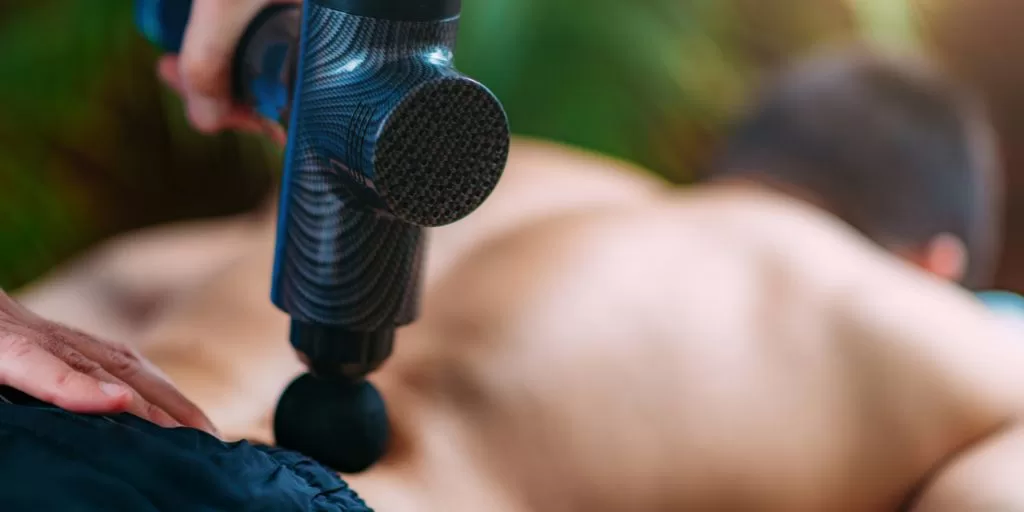
Some of the sports massage benefits are reduced stress and improved overall well-being, which can be especially beneficial for athletes who are under a lot of physical and mental strain. However, sports massage benefits don’t end here. Here are some other benefits of sports massages:
- Improved Recovery Time: Sports massage helps to reduce muscle soreness and fatigue, both of which can affect performance. Massage can also help to improve circulation, which can speed up recovery time after workouts and competitions.
- Reduced Injury Risk: Regular massage helps to reduce the risk of developing sports injuries. Massage helps to increase flexibility and range of motion, which can help to prevent injuries from occurring in the first place.
- Improved Performance: Massage helps to reduce muscle tension and soreness, which can improve an athlete’s performance. Massage also helps to reduce stress, which can help athletes stay focused and motivated. Also, by reducing the pain, it helps athletes perform better on the field as the pain is not blocking them from exerting their full power.
- Improved Mental Health: Massage can help to reduce stress and anxiety, which can have a positive effect on an athlete’s mental health. Massage can also help to relax the body, which can lead to improved mood and overall well-being.
- Pain Relief: Sports massage techniques can decrease the pain after an acute injury or even completely relieve chronic pain. Pain relief is one of the most important reasons people visit a sport massage therapist.
Who Is Sports Massage For?
Sports massage therapy is primarily for athletes and active individuals, but it can also be beneficial for anyone who experiences muscle soreness or tension due to physical activity or exercise. Regardless of your level of advancement, if you are physically active, it is always better to have access to a massage therapy professional. Having the access to a massage therapy treatment might save you the trouble of visiting a doctor as what is often mistaken for a joint injury, may turn out to be a muscle problem.
Professional athletes hire sports medicine massage therapists to improve their sports performance. Athletes understand the importance of looking after their bodies and one way they have been able to do this is by having their own massage therapy teams. Massage therapists help athletes prevent injuries by loosening tight muscles while increasing blood flow, range of motion, and flexibility. Massage therapy teams play an important role in helping athletes prepare mentally and physically for competition.
Massage therapy sessions help alleviate tension and stress which can build up over time in both physical and emotional ways. Athletes often experience fatigue from long workouts or sporting events, so having access to dedicated massage therapists helps them relax, notably reducing recovery times needed between performances. In addition, massage therapists are trained to identify areas where muscles may be strained or inflamed due to physical activity, allowing them to take proactive steps toward avoiding injury before it becomes a problem and achieve optimum health.
To sum up, the benefits of massage for athletes are invaluable and I believe that every active individual should visit a sports massage therapist from time to time.
Tools and Techniques Used in Sports Massage Treatments
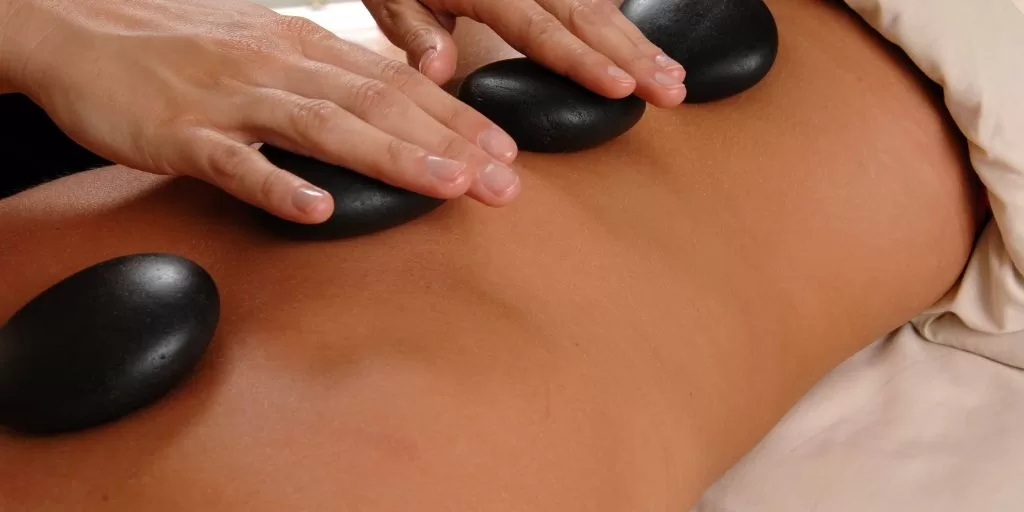
Sports massage therapists may use a variety of tools and techniques in their treatments, such as massage tables, massage chairs, massage balls, wooden handheld massagers, massage rollers, cups, IASTM tools, body sport massagers, and sports massage guns. The specific tools and techniques used will depend on the needs of the client and the goals of the massage therapy session. While some of them might be found under promising names such as “tennis elbow massager”, all types of massagers do the same thing and that is percussion therapy that relies on vibrations which desensitize the nerves and reduce pain.
A well-designed massage therapy plan usually includes multiple techniques. Sports massage techniques have been used for centuries as a means of relieving muscle pain and tension, as well as improving athletic performance. These techniques include the use of myofascial release, Swedish massage, and neuromuscular therapy. Myofascial release is a type of deep tissue massage that targets fascia (connective tissue) to reduce chronic tension and improve range of motion. Swedish massage combines five styles of long strokes and kneading movements that help alleviate soreness from physical activity. Lastly, neuromuscular therapy is a form of soft-tissue manipulation that uses alternating levels of pressure to stimulate blood flow and remove adhesions in muscles for improved movement.
Hot Stone Massage
Hot stone massage is a type of massage therapy that involves the use of heated stones to provide therapeutic heat to the muscles and soft tissues of the body. The stones, which are typically made of basalt, a type of volcanic rock, are heated to a temperature of approximately 120-140 degrees Fahrenheit and are then placed on specific areas of the body.
The use of hot stones in massage therapy dates back to ancient civilizations, such as the Native American and Egyptian cultures. It is believed that the heat from the stones helps to increase blood flow and circulation, relax the muscles, and reduce stress and tension.
In the context of sports massage therapy, hot stone massage can be particularly beneficial for athletes and active individuals who may be dealing with muscle soreness and fatigue. The heat from the stones can help to relax the muscles and improve flexibility, making it easier for the therapist to perform deep tissue massage techniques.
Additionally, hot stone massage can be helpful in reducing inflammation and swelling, and may even help to speed up the recovery process after intense physical activity. This can be especially beneficial for athletes who are training for competitions and need to maintain their physical condition.
Hot stone massage is a unique and effective way to enhance the benefits of sports massage therapy. It can provide a sense of relaxation and help to alleviate muscle soreness and fatigue, making it a valuable tool for athletes and active individuals looking to optimize their performance and recovery.
Stretching Massage
Stretching massage is a form of therapy that involves the application of pressure to muscle tissue. It helps to improve flexibility and range of motion, as well as reduce pain. This form of therapy also increases blood flow and oxygenation to the muscles, helping them to relax. Through this massage technique, the practitioner applies direct pressure along muscles in order to stretch them while applying circular movements.
The stretching massage can provide numerous benefits for people who suffer from muscle pain or tightness due to various conditions such as arthritis, sciatica, or carpal tunnel syndrome. The therapist will take into account any existing conditions when performing this type of massage so as not to cause further injury or harm. In addition, it can help decrease stress and tension in the body by promoting relaxation through lengthening and releasing tightness in muscles.
When receiving a sports stretching massage, athletes should expect their therapist to begin by gently warming up the muscles with light strokes and kneading techniques. This will increase blood flow and make it easier for the therapist to work deeper into the muscle. The therapist may then move on to apply more specific techniques such as myofascial release or trigger point therapy in order to target areas of tension or pain directly.
Active Release Technique, Soft Tissue Release, Pin and Stretch Technique are all forms of stretching massage.
Dry Cupping
Dry cupping is an ancient practice that has been used to treat various ailments for centuries. It’s a form of alternative medicine, where a cup is placed onto the skin creating suction. This suction helps to stimulate blood circulation to the area. Dry cupping can be used to treat conditions ranging from muscle pain, joint pain, and headaches to anxiety, depression, and even stress-related illnesses.
The process involves using heated cups on the skin, which are usually made from bamboo or plastic (although in modern days, it’s already becoming more and more common to use electric cups). The heat helps create an intense suction that pulls up the skin and underlying tissues away from the body. This creates tiny amounts of pressure which can relax muscles while stimulating blood flow throughout the body. This increased circulation can help reduce inflammation in areas that are experiencing pain or discomfort due to injuries or chronic conditions like arthritis.
Dry Needling
Dry needling, also known as intramuscular manual therapy (IMT) or medical acupuncture, is a therapeutic technique that uses fine needles to stimulate the body’s natural healing process. This type of treatment has been used for centuries in traditional Chinese medicine and more recently in physical therapy.
The primary purpose of dry needling is to reduce pain and improve movement patterns, flexibility, and strength. An IMT practitioner inserts thin needles directly into the target muscle or tissue at specific points or areas of tension or tightness known as trigger points. The insertion of these needles causes an involuntary twitching response within the muscle which can lead to improved blood flow and increased range of motion in the area.
Instrument Assisted Soft Tissue Mobilization (IASTM)
Instrument Assisted Soft Tissue Mobilization (IASTM) is a therapeutic technique used to treat muscle and connective tissue pain. It involves the use of specialized instruments that are designed to detect and treat fascial restrictions, scar tissues, and other soft tissue dysfunctions. The instrument initially detects the area of restriction through its unique shape, which allows it to glide over the affected tissue without causing pain or discomfort. It then applies controlled pressure on the affected area to help break up adhesions, improve blood flow and reduce inflammation.
The treatment is typically administered by an experienced healthcare professional who uses a series of light strokes along with more direct pressure in order to achieve desired results. This process promotes healing by improving circulation, reducing stiffness, and increasing mobility in joints and muscles.
Deep Tendon Reflex Stimulation
Deep tendon reflex stimulation involves stimulating the muscle tendons to influence the muscles themselves. Quickly poking the muscles’ tendons causes the muscles to be subdued to a quick stretch which, in turn, elicits the stretch reflex. The stretch reflex causes the muscles to twitch and these twitches can cause the agonist and antagonist muscles to relax through the autogenic inhibition and reciprocal inhibition mechanisms. Primal Reflex Release Technique is a type of deep tendon reflex therapy.
Also, putting pressure on the tendon while the muscle remains in a stretched position causes it to relax via neurological mechanisms. This technique is very useful for relieving muscle hypertonicity caused by excess psychological stress. It’s painless and effective but has its limitations.
Muscle Energy Techniques
Muscle Energy Techniques (MET) is a type of manual therapy that involves the use of gentle and precise muscle contractions to assess and treat dysfunction in connective tissues. The therapist will guide the client’s muscles through various stretching and relaxation techniques to restore balance, coordination, and range of motion. By handling the body in a very specific way, MET is able to target areas that are often difficult for other treatments to reach. In addition, by engaging both active and passive participation from the client during treatment, MET helps strengthen their mind-body connection.
The goal of Muscle Energy Techniques is to restore proper function in weakened muscles or joints that have limited mobility due to injury or trauma. It can be used for neuromuscular reeducation as well as joint mobilization.
Proprioceptive Neuromuscular Facilitation
Proprioceptive Neuromuscular Facilitation (PNF) is a form of therapy which helps improve one’s range of motion and muscle strength. This type of therapy focuses on improving joint mobility and flexibility by using specific stretching techniques to help the muscles relax, as well as incorporating strengthening activities. PNF involves both passive and active stretching exercises, in addition to practicing diagonals and patterns to promote increased movement awareness.
The goal of these exercises is to increase sensory input from the joints, ligaments, tendons, muscles, and skin receptors; this allows for more control over movements resulting in improved coordination as well as improved balance and posture. PNF can also be used to improve flexibility during injury recovery phases or post-operative rehabilitation programs. This is often achieved by using the PNF stretches.
Craniosacral Therapy
Craniosacral Therapy is a holistic healing modality that works to restore balance throughout the body. It focuses on gently manipulating the head, neck, and spine in order to alleviate pain and tension. By helping the body relax and release its stress, Craniosacral Therapy can be used to treat various forms of mental and physical issues such as headaches, back pain, fatigue, insomnia, TMJ disorders, depression, anxiety, and more.
Proponents of Craniosacral Therapy believe that it works by allowing practitioners to access the craniosacral system – a network of membranes and fluid that covers the brain and spinal cord. They claim that this system is sensitive to changes in environment or health; thus manipulating it can help clear blockages which may be linked with certain ailments or imbalances in energy flow.
Deep Tissue Massage
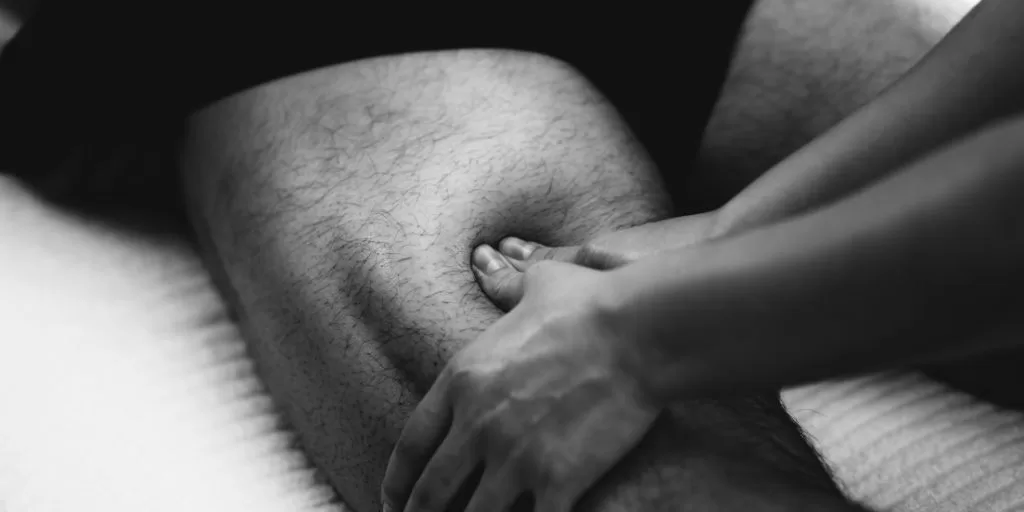
Deep tissue massage and sports massage are two popular types of therapeutic massage. While both have the same goal of improving musculoskeletal health, they vary in their approach and techniques used.
Deep tissue massage focuses on manipulating the deeper layers of muscle and connective tissue to release chronic tension or knots. This is done through slow strokes and deep finger pressure that helps relieve scar tissue, improve flexibility, reduce pain, restore range of motion, reduce inflammation and improve overall wellbeing. This type of massage is often beneficial for those suffering from chronic pain due to injury or illness as it targets areas that conventional relaxation massages may miss.
Sports massages are typically used by athletes to help improve performance both during a competition or after a practice session but can be also helpful for people with regular physical activity as well as those who exercise recreationally every once in a while.
While deep tissue massage may be incorporated into a sports massage treatment, it is not the primary focus of the massage. Deep tissue massage is a type of massage that is designed to reach deeper layers of muscle tissue and is often used to treat chronic muscle pain and tension. It involves the use of firm pressure and slow strokes to reach the deeper muscle tissue.
In short, it’s literally a very deep tissue massage, meaning that you will feel how the therapist presses deep into the muscles and restores proper functioning in the overly tense fibers.
Deep Tissue Massage Benefits
Deep tissue massage has become an increasingly popular form of massage therapy that is used to treat a variety of ailments. It is used to reduce pain, improve circulation, and relax muscles. Its benefits are numerous and can be applied to a wide range of physical issues.
One of the primary benefits of deep tissue massage is its ability to help treat muscle-related pain and tension. This occurs when the therapist applies pressure with their hands or elbow directly into the muscles. This technique can penetrate the deeper layers of muscle tissue, which helps decrease pain and promote healing throughout the entire body. Additionally, this form of massage stimulates circulation which aids in increasing oxygen flow throughout the body while reducing inflammation caused by tightness in muscles or knots in tissues due to stress or injury.
Is Deep Tissue Massage Good for Arthritis?
Deep tissue massage uses slower, more forceful strokes to target the deeper layers of muscle and connective tissue in the body. This type of massage can be beneficial for those with arthritis, as its purpose is to release tension deep within the muscles. It helps to increase flexibility, reduce pain, improve circulation, and help flush toxins from the body.
Research shows that many people suffering from arthritis experience significant improvement in their joint function and chronic pain after regular deep tissue massages. Additionally, massage therapy has been shown to reduce inflammation caused by arthritis. Massage helps by applying gentle pressure directly onto problem areas, which increases blood flow and releases endorphins that are responsible for reducing pain levels while increasing relaxation.
Can Deep Tissue Massage Make You Sick?
Many people are unaware of the potential risks and side effects associated with this type of massage, including feeling sick. In some cases, deep tissue massage can actually cause more harm than good when it comes to stress relief and relaxation.
When done correctly, deep tissue massage can be incredibly effective at targeting deeper layers of muscle tissues and providing a sense of overall relaxation. But without proper preparation or technique, the pressure put on muscles during a deep tissue massage can end up causing more pain than relief. This strain on the body’s muscles can leave individuals feeling sore or even ill days after their session.
Why Does Deep Tissue Massage Hurt?
Deep tissue massage has been known for centuries as a way to relieve aches, pains, and stiffness in the body. It is said that this type of massage is more intense than many other forms of massage therapy; however, it can also be quite painful. Many people who have had deep tissue massages report experiencing an intense degree of pain during the session. This can leave them perplexed as to why something meant to bring relief causes so much discomfort.
One reason why deep tissue massage can hurt is because it gets into deeper layers of muscle and connective tissues in order to break down knots and tension built up in those areas over time. The pressure applied during a deep tissue massage may sometimes be uncomfortable or even overwhelming, depending on the knot being worked out or how sensitive the person’s body is. So, before you start Google searching for “deep tissue sports massage near me”, be aware that deep tissue massage is an advanced form of therapy that can induce pain.
Deep Tissue Massage and Bodybuilding
Deep tissue massage has become an invaluable part of bodybuilding. It helps athletes to increase their performance and reduce the likelihood of injury while lifting. The massage allows sportspersons to recover more quickly following tough workouts. It can also reduce post-exercise soreness, allowing athletes to get back in the gym sooner.
One of the most beneficial aspects of deep tissue massage is that it helps release trigger points which are the muscles that have become stuck in a contracted state due to overuse or strain. This not only allows athletes to feel better after a session, but it can also improve flexibility and mobility – essential components for any bodybuilder engaging in intense exercises like squats and deadlifts. Additionally, deep tissue massage aids in improving circulation throughout the muscles which encourages increased oxygenation for greater muscular strength and endurance during exercise sessions. So, if you are a bodybuilder striving for peak performance, incorporating regular deep tissue massage treatments into your bodybuilding routine might be a good idea.
Side Effects of Sports Massage

Sports massage is a popular treatment for athletes and those with an active lifestyle. It helps to reduce tension and muscle fatigue, improve circulation, and increase flexibility. While it can be beneficial for overall health and wellness, there are potential side effects associated with this type of massage.
One of the most common side effects of sports massage is bruising or soreness in the treated area. This can occur if too much pressure is applied during the session. Additionally, some people may experience nausea or dizziness after a session due to increased circulation or stimulation of certain nerves in the body. Finally, inflammation or swelling in the affected area may also occur if an excessive amount of pressure was used during the massage.
Fortunately, these symptoms are usually temporary and should subside within a few hours or days following treatment.
Is Sports Massage Painful?
Sports massage therapy is not typically painful, but it may be somewhat uncomfortable at times, especially if the therapist is working on particularly tight or sore muscles. The therapist should always check in with you to ensure that the pressure is comfortable and that you are not experiencing any pain or discomfort. If you do experience pain or discomfort during the massage, you should let the therapist know so that they can adjust their technique or pressure.
Other Forms of Manual Treatment

In addition to sports massage therapy, there are several other forms of manual treatment that may be used to help athletes and active individuals prevent and treat injuries and improve performance. These include dry needling, deep tissue massage, physiotherapy, sports therapy, osteopathy, chiropractic, and more. Since deep tissue massage and dry needling are only therapeutical techniques and not separate fields of knowledge, I will list and explain only the remaining types of manual treatments below.
Physiotherapy
Physiotherapy is a form of healthcare treatment that uses physical methods, such as exercise and massage, to help people with various medical conditions. It focuses on helping patients restore movement and function by reducing pain and increasing mobility. Physiotherapists use manual techniques as well as electrical stimulation, heat therapy, and ultrasound to improve the condition of their patients. Physiotherapists are also skilled in providing advice on lifestyle changes that can be made to maintain the improvements they have achieved. They aim to improve the overall well-being of the patient.
The most common reasons for attending physiotherapy sessions include arthritis, fractures or sprains, sports injuries, chronic pain syndromes, or post-operative rehabilitation from orthopedic surgery. A physiotherapist will assess an individual’s condition before providing a tailored plan of care aimed at reaching individual goals within an agreed period of time.
The difference between sports massage therapists and physiotherapists is that physios are also allowed to lead the patient through a rehabilitation program after a stroke, surgery, or other illnesses. Physiotherapists usually have a master’s degree in physiotherapy and have a solid medical background.
Sports Therapy
Many wonder what is sports therapy and how does it differ from sports massage. Sports therapy is a type of healthcare that is specifically designed for athletes and active individuals. It may involve the use of exercise, massage, and other techniques to help athletes and active individuals prevent and treat injuries and improve performance.
Sports therapy and sports massage therapy are two different treatments for athletes or people who enjoy physical activity.
Sports therapy includes a range of techniques that can be used to treat, rehabilitate and improve the performance of an athlete. These techniques include exercise prescription, manual therapies, joint mobilization, and soft tissue techniques.
Sports massage therapy is a specialized type of massage which uses specific strokes to manipulate the muscles and other soft tissues in order to help increase flexibility, reduce pain and enhance an athlete’s performance. While both forms of treatment have their benefits, they can also be used as complementary approaches to improve outcomes for athletes.
Sports therapy is commonly used by accredited sports therapists who have a good understanding of the body’s anatomy along with kinesiology (the study of movement).
Osteopathy
Osteopathy is a type of medicine, which relies heavily on manual therapy techniques to treat the musculoskeletal system. According to this approach, when the bones, joints, and muscles are functioning properly, then overall health should improve as well. Osteopathy also takes into account lifestyle factors such as posture and ergonomics in order to restore balance within the body’s systems.
The primary aim of osteopathy is to reduce pain and help promote healing by using hands-on techniques such as manipulation, massage, and stretching. These techniques aim to release muscle tension, improve circulation and mobilize joints in order to restore proper movement in all parts of the body. Osteopathic practitioners believe that physical structure affects bodily functions therefore, restoring the balance between these can lead to improved health outcomes for their patients.
Chiropractic
Chiropractic is a holistic health care system that focuses on the musculoskeletal system, in particular the spine.
Chiropractors around the world use high-velocity, low-amplitude (HVLA) manipulations to improve the range of motion. HVLA is a form of manipulation performed by chiropractors that involves quick, short thrusts directed at specific joints. It’s an effective way to help restore a normal range of motion and reduce pain in the affected area. HVLA manipulations are often used for conditions such as sciatica, lower back pain, neck stiffness, and headaches.
The procedure itself is relatively quick; it only takes a few minutes and can be done in one session or several depending on the severity of the issue being treated. A chiropractor may perform several different tests before beginning treatment with HVLA manipulations to ensure they provide the right type of care for each individual patient’s needs.
The goal of chiropractic is to restore balance in the musculoskeletal system so that it can heal itself naturally without drugs or surgery. Chiropractors believe that this type of therapy promotes whole-body wellness since an imbalance in one area often leads to imbalances elsewhere.
How To Become A Sports Massage Therapist?
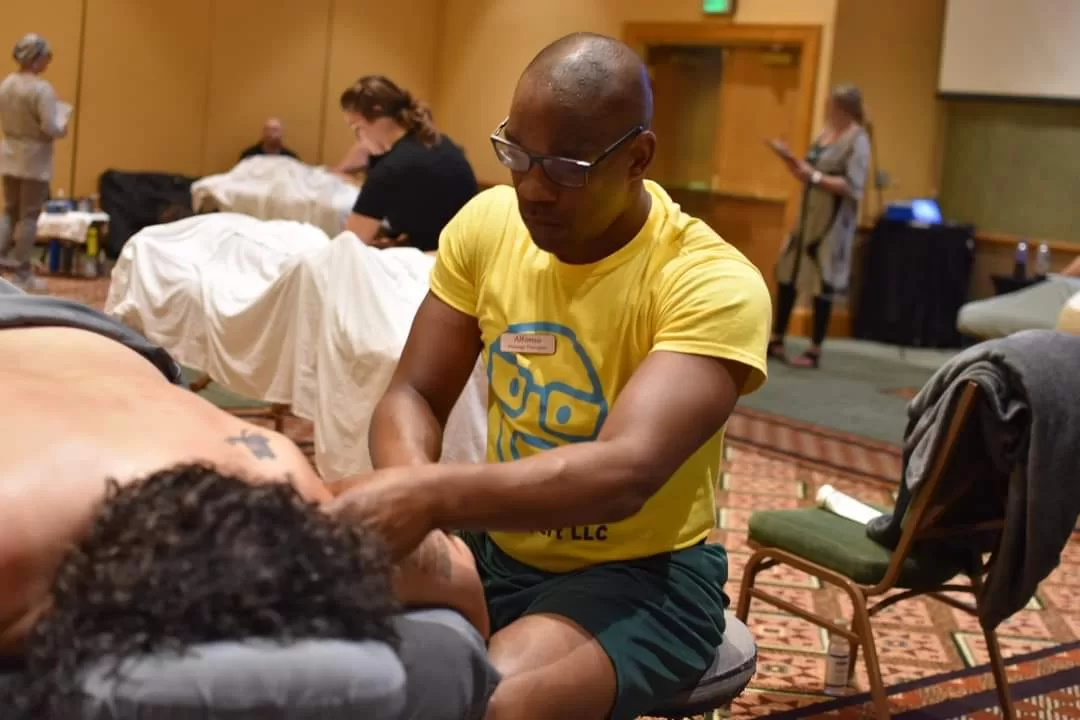
To become a sports massage therapist, you will need to complete a massage therapy program and pass a certification exam. The length of time it takes to become a certified sports massage therapist will depend on the specific program you choose.
It’s also worth noting that since a sport massage therapist often works not only with people who are into body sports but also with injured individuals, they will need massage liability insurance and in order to get one, they must first complete an accredited massage therapy program and receive a sports massage therapist certification. Only with a valid sports massage certification and insurance, once can be considered a good therapist.
Also, note that a good therapist will regularly attend additional courses to acquire sports massage CEU points as updating one’s knowledge is a must for every medical and sports massage therapist.
How Long Does It Take to Become a Certified Sports Massage Therapist?
The length of time it takes to become a certified sports massage therapist will depend on the specific program you choose. Many massage therapy programs take about 500 hours to complete, which can take anywhere from six months to a year or longer, depending on the schedule of the program. After completing a massage therapy program, you will need to pass a certification exam in order to practice as a sports massage therapist.
For example, to become a Level 4 Sports Massage Therapist in the United Kingdom, I had to go through two regulated courses that were 540 hours in total (together). On top of that, I also went through hundreds of hours of additional training to learn new techniques and I am also aiming to go through another regulated course to become a Level 5 Sports Massage Therapist within the next few months.
On the other hand, my friend Alfonso who is a sports massage therapist in Lumberton, NC completed a Health Fitness Specialist Degree at the East Carolina University and then took additional 500+ hours of accredited training in the field of sports massage therapy. Upon completion, he had to pass a national certification exam to be able to provide medical massage to his patients.
Sports Massage FAQ
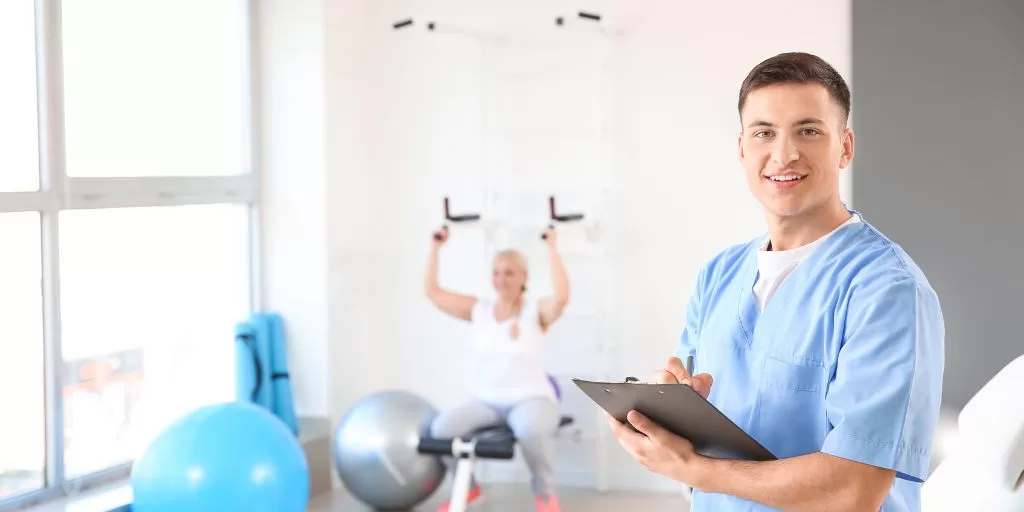
Most people are curious about sports massage therapy because they believe it can help them recover faster from injuries or improve their performance. However, there is no single answer to every question about sports massage, as the therapy can vary depending on the individual’s specific needs.
Some of the most common questions people ask about sports massage include: does it work?; how often should I visit a therapist?; what types of treatments do you offer?; and what are some potential side effects?
Each person’s experience with sports massage will be different, so it is important to speak with a therapist before starting treatment in order to get an overview of your specific needs. Additionally, always consult your healthcare provider before starting any new therapy or exercise program, as even minor changes could lead to big health complications.
Here are answers to some commonly asked questions about sports massage therapy:
Is Massage Therapeutic?
Sports massage therapy is a therapeutic process. Athletes who receive regular athletic massage therapy experience greater mental clarity and improved performance in their sport because it reduces fatigue levels while increasing energy flow throughout the body. After an injury occurs, it can help rehabilitate muscles that were weakened due to extended periods of inactivity. It also increases flexibility which can help prevent future injuries from occurring during physical activity.
Can I Go to the Gym After a Sports Massage Treatment?
It is generally safe to go to the gym after a sports massage treatment. In fact, many athletes and active individuals find that a sports massage can help improve their performance and recovery time after a workout. However, if you are experiencing any soreness or stiffness after the massage, you may want to take it easy at the gym and focus on low-impact activities until you feel fully recovered.
Can I Drink Alcohol After a Sports Massage Treatment?
It is generally not recommended to drink alcohol after a sports massage treatment. Alcohol can interfere with the body’s natural healing processes and may even worsen muscle soreness and inflammation. It is best to hydrate with water or other non-alcoholic beverages after a massage treatment to help your body recover and repair.
How Long Does a Sports Massage Treatment Last?
A sports massage treatment can vary in length depending on the individual’s needs and preferences. Generally speaking, a full-body sports massage is about 60 minutes long. However, some people may opt for shorter or longer massage sessions to target specific areas of their bodies. For instance, athletes who are dealing with an injury may require a 90-minute session to ensure that they receive a more comprehensive treatment that addresses their specific issues. On the other hand, someone who is just looking to relax and unwind after a hard training session can choose to book a 30-minute session instead. The duration of the sports massage also depends on what type of techniques is being used during the session. Deep tissue massages are typically longer because they involve more slow strokes and pressure applied directly into problem areas in order to relieve tension and tightness within muscles.
Is Sports Massage Treatment Expensive?
The cost of sports massage therapy will vary depending on the practitioner’s qualifications and experience as well as the location. Generally, prices range from $50-150 per hour with some bigger cities charging more than others due to higher overhead costs. In addition, regular appointments may require multiple sessions that can add up quickly over time. Some insurance plans may cover the cost of sports massage treatment, but it is best to check with your insurance provider to see if your plan covers this type of therapy. Also, note that more experienced therapists who utilize unique techniques in their treatments can charge way more than that, however, such therapists usually work with top-notch athletes and not regular people.
What to Wear to a Sports Massage Treatment?
When attending a sports massage treatment, it is important to wear appropriate clothing that will allow the masseuse to access your muscles and provide the best care possible. Knowing what to wear to a sports massage treatment can help set you up for success and ensure that you get the most out of your appointment. For a successful massage experience, it is recommended that clients dress in comfortable and loose-fitting clothing such as shorts or yoga pants, with long sleeves or t-shirts. Avoid any restrictive fabrics like jeans or other tight-fitting items as they may interfere with your mobility during the treatment. Additionally, wearing layers gives more flexibility depending on how warm or cold you may feel at any given time during the session. Wearing sneakers or supportive shoes is also advised since some massages involve walking around for stretches and other activities.
Are There Different Types of Sports Massage Treatments for Men and Women?
Although the treatment is usually almost the same, sports massage for men is typically more vigorous due to the fact that men usually have a higher pain threshold. People who advertise themselves as massage therapists for men, typically use more direct methods to treat musculoskeletal issues. These methods tend to be more painful as the therapist uses more force. The benefits are often greater (especially if one is an athlete), but it is also more painful and can cause bruises that last for longer. If you are a gentle female, it’s recommended you tell your therapist that you have a lower pain threshold as otherwise, you may experience more pain than you were prepared for.
Can Sports Massage Treatment Trigger an Emotional Response?
Many people don’t realize that sports massage can also trigger an emotional response. The act of receiving a massage can bring up strong feelings, as the practitioner works with the person’s body to help them relax and release their stresses. The emotional response to sports massage therapy may vary depending on the individual. Many people feel relaxed and peaceful during a session, as the relieved tension gives way to relaxation. Others may find themselves feeling vulnerable or overwhelmed by emotion as they begin to let go of built-up stress in their muscles. Some may even cry, laugh or become angry after their session is over if the process has stirred up buried emotions from within.
How Often Should I Visit a Sports Massage Therapist?
Sports massage therapy is an important part of many athletes’ regimens for keeping their bodies injury-free and in top condition. The question of how frequently should one visit a sports massage therapist often comes up, as the frequency can depend on individual needs.
Visiting a sports massage therapist regularly has its benefits; it relieves tightness, increases joint flexibility and range of motion, strengthens muscles, and helps to identify potential injuries before they become more serious.
For those who suffer from chronic pain or specific muscular issues, visiting once every week or two weeks may be necessary in order to maintain good health.
Those who are not suffering from any injuries but are athletes who go through strenuous physical training, usually visit their massage therapists once a month or two to ensure that their bodies are well-prepared for extreme physical conditioning routines.
On the other hand, people who exercise recreationally might visit their therapist once every couple of months (e.g. quarterly) for regular checkups and it usually suffices to maintain good health.
Overall, the answer to “how often should I see my therapist” depends on your lifestyle and the needs of your body.
Finding the Right Sports Massage Therapist for Yourself
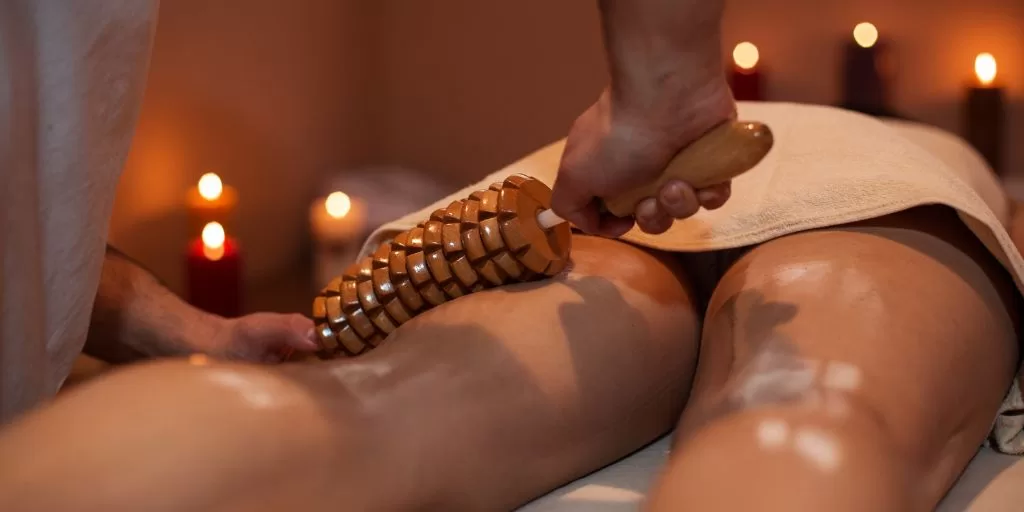
Before you start searching for “massage for athletes near me”, “orthopedic massage near me”, or “sports massage therapy near me”, it is important to learn about the factors that distinguish certified therapists from people who took online courses. Although many athletes simply go to Google and type in “sports massage therapist near me” and get away with it, working with an inexperienced person who is not fully certified can do more harm than good.
Also, when looking for a sports massage therapist, it is important to find someone who is experienced, trained, and certified in the field of sports massage therapy. You should also look for a therapist who is a good fit for your needs and goals. Some questions to consider when selecting a sports massage therapist include:
- What is the therapist’s experience and training in sports massage therapy?
- Does the therapist have any specialized training or certifications in the field?
- What are the therapist’s availability and scheduling policies?
- Does the therapist offer a free consultation or trial session?
- What is the therapist’s cancellation policy?
- Does the therapist have any online reviews or testimonials that you read before the initial session?
- What are the therapist’s fees and do they accept insurance?
Finally, it is important to have a conversation with the therapist to make sure you feel comfortable working with them. Sports massage therapy can be an intimate experience, so it is important to find someone you feel comfortable talking to about your needs and concerns.
If you are based in the United States, you can also use the American Massage Therapy Association (AMTA) database to check if the therapist you’re about to visit is appropriately qualified. By considering these factors, you can find a sports massage therapist who is well-trained, experienced, and a good fit for your needs and goals. This will help you get the most out of your sports massage therapy sessions and improve your overall athletic performance.
P.S. If you are interested in improving your health, you might also want to read how combining strength training, yoga, and meditation can work in synergy to help you maintain good health and sports performance levels.

